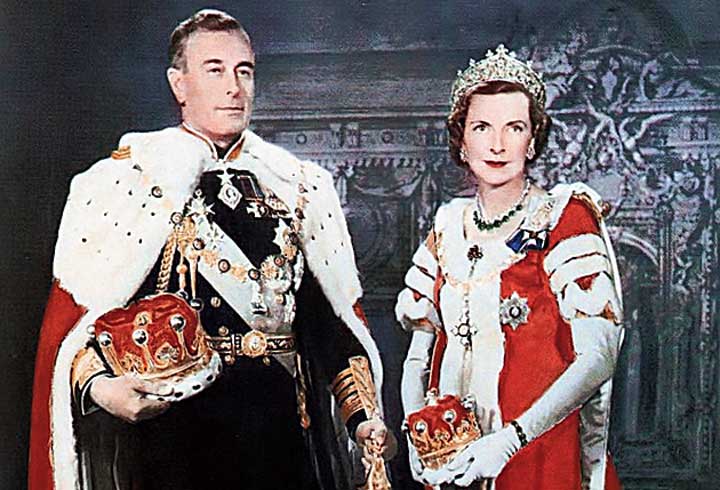The family of Lady Edwina Mountbatten has revealed how they trekked from bank to bank in London in search of the vault containing her missing jewellery, some of which she had worn when she was the Vicereine in India.
Edwina cut a dazzling figure in India when her husband, Lord Louis Mountbatten, was sent out in 1947 as viceroy to preside over the country’s Partition and transfer of power — Jawaharlal Nehru was among those who was charmed by her patrician elegance.
With the Mountbattens was their 17-year-old younger daughter, Pamela, who in time married an interior designer, David Hicks, and is now an 89-year-old widow. Pamela’s younger daughter is India Hicks, 51, also a designer.
Among the upper classes, it is quite fashionable to christen their daughters “India” after the “jewel in the crown”.
It is India Hicks who has told the story of the hunt for the missing family jewellery in an article in the Daily Mail: “What do you do when your elderly mum has put the family heirlooms in a bank vault — but can’t remember which one?”
The article explains the importance of the jewels: “Lady Pamela Hicks, 90 in April, had gems belonging to her mother, Edwina, Countess Mountbatten of Burma.”
India Hicks set out the reason for the search: “My mother, Lady Pamela Hicks, turns 90 in April. Although she is razor sharp and shows no indication of losing her capacity to dazzle an audience with stories from her eventful life, I still thought it time we tracked down her family jewels. She had placed them safely in a vault in a bank in London; this much my mother knew absolutely.
“However, quite which bank was custodian of the gems — some of which had belonged to my maternal grandmother, Edwina, Countess Mountbatten of Burma — was the conundrum.”
The one detail India Hicks learnt from her mother was that the missing jewellery case was “leather and embossed in gold leaf with my grandmother’s initials, EM for Edwina Mountbatten”.
With Pamela in a wheelchair on a rainy day, India Hicks arrived at a bank in the Strand “where my mother had been a customer for 60 years. We were ushered in with great ceremony and offered cappuccinos and custard creams.”
The bank produced the wrong box — a “large, old-fashioned cardboard carton with leather corners” — which contained “a bride’s headdress; wired, ribboned and lavishly ornamented, and, apparently, it was traditionally worn by women when they didn’t want to sport a tiara”.
The second bank also drew a blank. After fortifying tea at Wolseley Café in Piccadilly and a phone call to her brother Ashley for tips, India Hicks and her mother arrived at a third bank, now a modern glass edifice where the revolving door was all that remained of the original. But this seemed to awaken Pamela’s memory.
“There was no longer a doorman in a top hat greeting valued longstanding customers. Instead, there was a young chap from Poland who kept asking my mother for her online banking details so he could ‘access’ the system.
“Like so many of her generation, my mother belongs to an era before Internet banking and passwords. Their modern system was not equipped to deal with people such as her.”
Pamela would not be fobbed off by the bank’s initial refusal to conduct a search. “My mother is amusing company. She is also determined and formidably well-connected. She is a great-great-granddaughter of Queen Victoria and was present at some of the 20th century’s key moments.
“She was one of the tiny group with Princess Elizabeth in Kenya in 1952 on the morning she heard her father, George VI, had died and she was now Queen.
“She was a bridesmaid, too, at Princess Elizabeth’s wedding in 1947. Once my mother sets her mind on something, she is not to be trifled with,” India Hicks wrote.
Finally, the bank’s manageress, also Polish, was summoned, and was prevailed upon to do a search after Pamela had showed her passport and the keys to the box that she still possessed. After an hour’s search, the box was found but it was large and not easy to get home.
“Of course, my grandmother, Edwina Mountbatten, travelled the world extensively, and had amassed quite a collection.”
Back at home, the key turned effortlessly but the box would not open. Eric, the handymen, was summoned.
“‘Stand back, Lady Pamela!’ he said gruffly, as the drill forced its way into the poor case.
“The lid opened and some small velvet cushions were removed to reveal a staggering array of sparkling gems. My grandmother was the last Vicereine of India during the final months of the British Raj in 1947.
“Opening her jewellery case was like turning the pages of a photo album: every piece prompted a memory from my mother. We spent the rest of the afternoon enthralled by my mother’s stories that the jewellery triggered.
“My mother picked out a diamond bracelet that reminded her of an ornate necklace Edwina had worn in India, which could be taken apart and worn as a three-banded bracelet.”
When Edwina died in 1960, aged 59, and was buried at sea by Lord Mountbatten in accordance with her wishes, Nehru sent the Indian Navy frigate INS Trishul as an escort and had a wreath cast in her memory.










